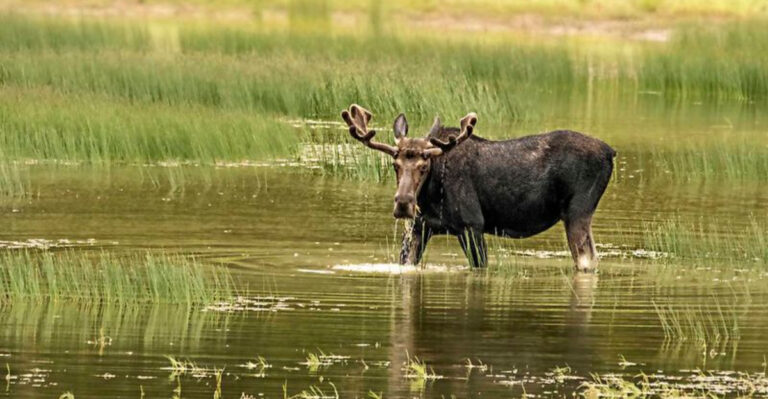Eagle Sizes: A Look At The Largest Species In The U.S.
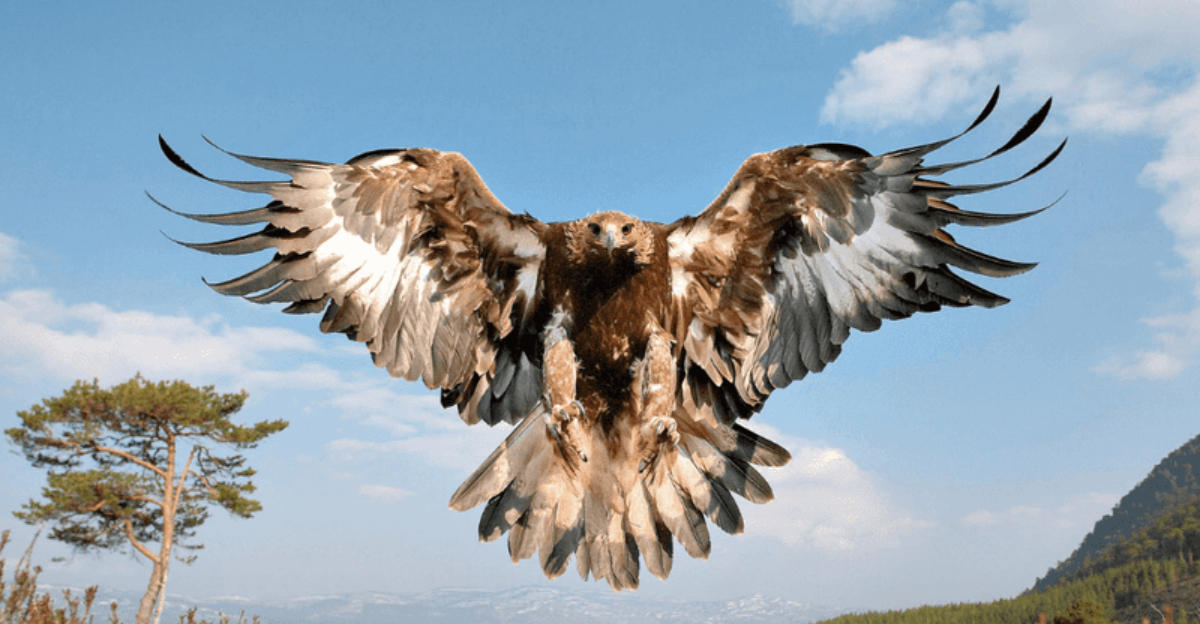
Eagles represent some of America’s most magnificent birds of prey, soaring through our skies with impressive wingspans and powerful builds.
These majestic creatures vary surprisingly in size, from relatively modest hunters to truly enormous specimens that command respect throughout their territories.
Whether you’ve spotted them in the wild or simply admire them from afar, understanding the size differences between eagle species helps us appreciate their unique adaptations and hunting capabilities.
1. Bald Eagle
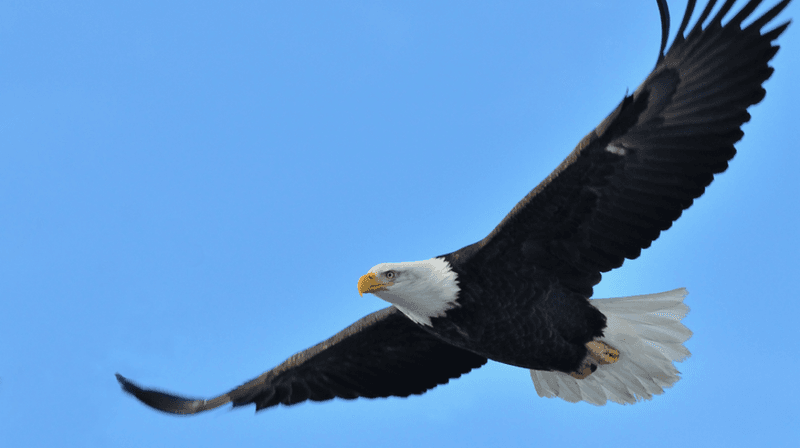
Standing tall as America’s national bird, the bald eagle boasts an impressive wingspan reaching up to 7.5 feet. Adult females typically weigh between 10-14 pounds, while males are smaller at 8-9 pounds – a size difference that helps pairs divide nesting duties effectively.
Their massive yellow beaks and talons aren’t just for show. These powerful tools can exert enough pressure to crush bones and tear through tough hide. Despite their name, bald eagles aren’t actually bald – their white head feathers inspired early settlers who used the word ‘balde,’ meaning white in Old English.
2. Golden Eagle
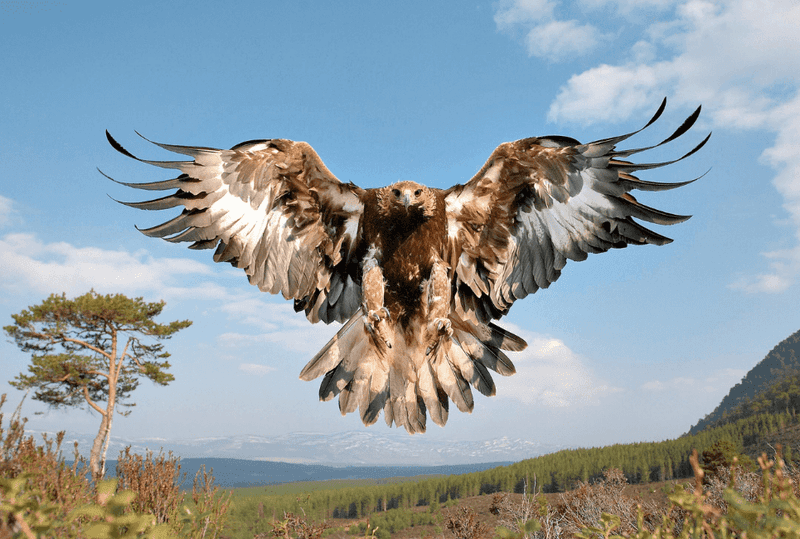
Ruling the western mountains with authority, golden eagles match bald eagles in size but display a completely different color pattern. Their wingspan stretches between 6-7.5 feet, with females weighing up to 13.5 pounds – slightly heavier than males who typically reach about 9 pounds.
Named for the distinctive golden-brown feathers on their napes, these powerful hunters can dive at speeds exceeding 150 mph when pursuing prey. They build massive nests on cliff ledges, some measuring up to 10 feet across and weighing over a ton after years of additions and renovations.
3. Steller’s Sea Eagle
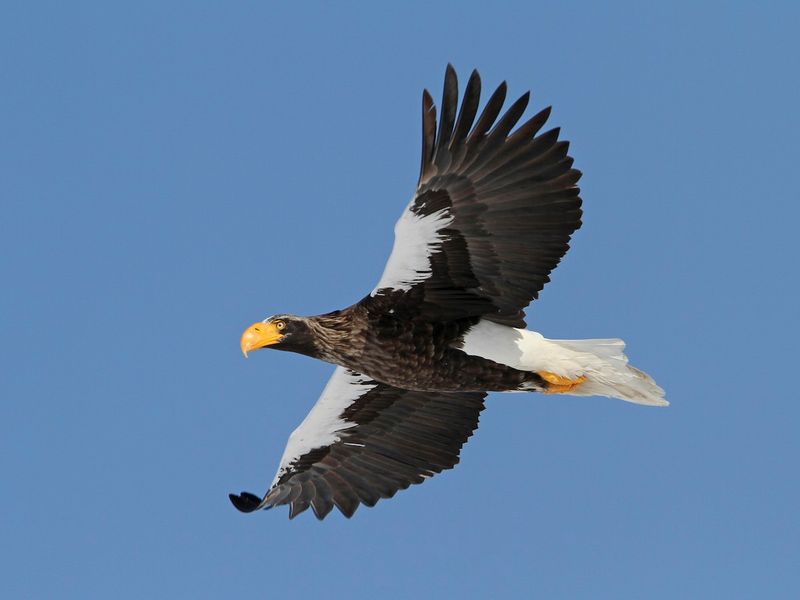
Though primarily native to Russia, Steller’s sea eagles occasionally visit Alaska, making them a rare but exciting U.S. species. These giants hold the title of heaviest eagle in the world, with females weighing up to 20 pounds and sporting wingspans that can exceed 8 feet.
Their massive orange beaks stand out dramatically against dark brown bodies and white shoulders. Fish make up about 80% of their diet, which they snatch with talons strong enough to carry prey weighing nearly half their body weight. Bird watchers consider spotting one in Alaska a once-in-a-lifetime experience.
4. White-tailed Eagle
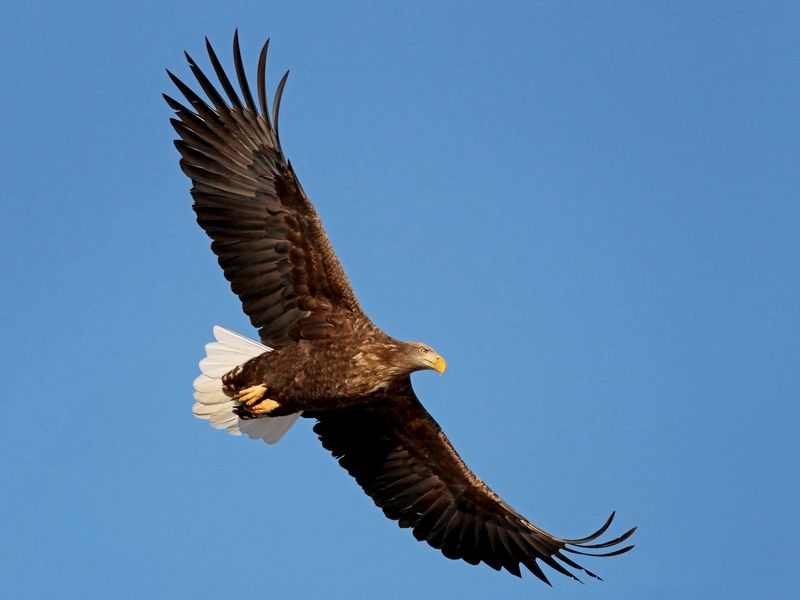
Occasionally spotted along Alaska’s coastlines, the white-tailed eagle impresses with its broad, plank-like wings spanning up to 8 feet across. Adults weigh between 8-15 pounds, with females typically outweighing their male counterparts by about 25%.
Their distinctive white tail develops only after reaching maturity at around 5-6 years old. Young birds sport mostly brown plumage with mottled patterns. These powerful coastal hunters primarily target fish but won’t hesitate to scavenge or steal meals from other predators – a behavior called kleptoparasitism.
5. Crested Eagle
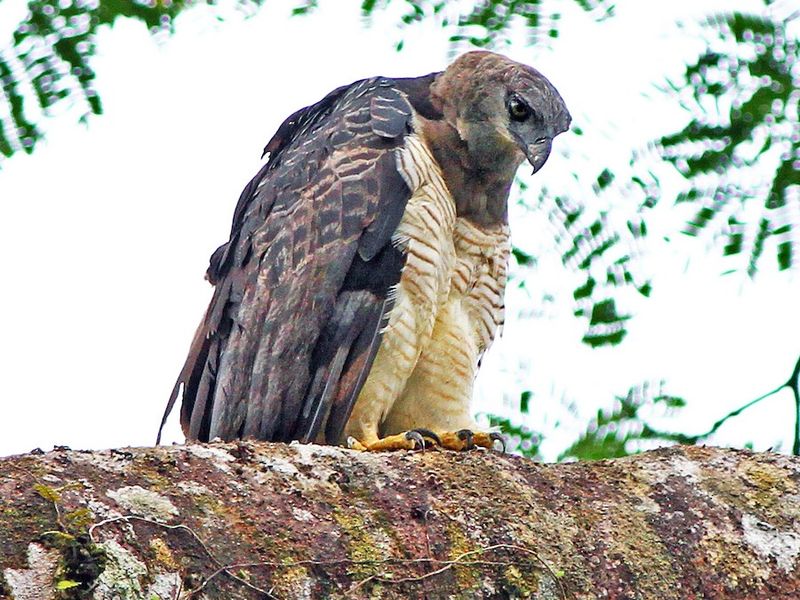
The Crested Eagle may not be as well-known as the Bald or Golden Eagle, but it’s one of the largest raptors found in the U.S., though sightings are rare and mostly limited to southern Texas.
With a wingspan reaching up to 6 feet and a body built for strength, this powerful bird is native primarily to Central and South America, occasionally wandering north. Its distinctive feathered crest and piercing eyes make it a striking sight in the wild.
Despite its size and majesty, the Crested Eagle remains one of the more elusive giants of the eagle world.
6. Ornate Hawk-Eagle
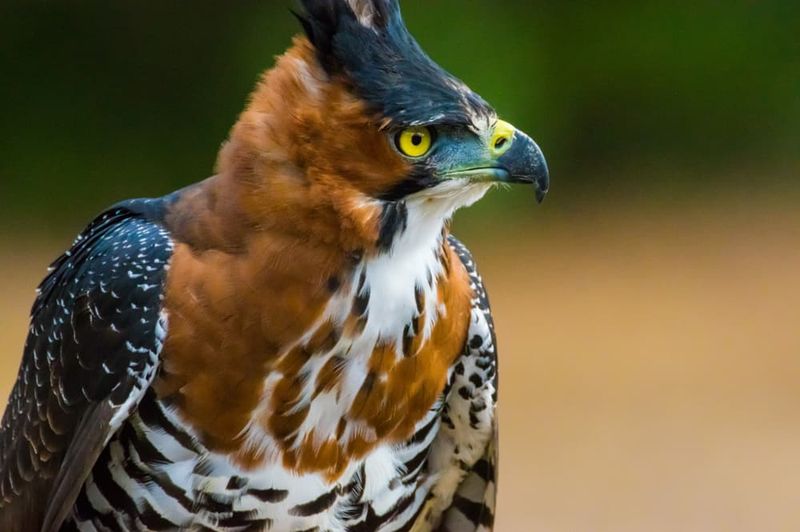
The Ornate Hawk-Eagle is a striking and powerful raptor that rarely appears in the United States, with only occasional sightings reported in southern Texas.
Known for its bold plumage, dramatic crest, and fierce yellow eyes, this eagle is more commonly found in tropical forests of Central and South America.
Though smaller than some other eagle species, it boasts a wingspan of about 4 to 5 feet and an intense hunting style that targets monkeys, birds, and reptiles. Its rare appearances in the U.S. make it a fascinating outlier among the nation’s eagle sightings.
7. Wedge-tailed Eagle
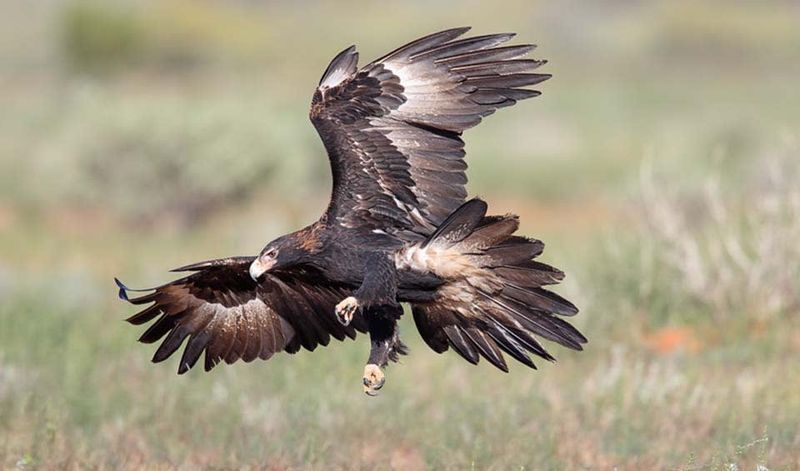
Several U.S. zoos house wedge-tailed eagles, Australia’s largest bird of prey and among the biggest eagles worldwide. Their impressive wingspan stretches up to 9 feet – wider than many bald eagles – though they typically weigh less at 7-12 pounds.
Named for their distinctive wedge-shaped tail, these eagles sport dark feathers that lighten with age. They’re renowned for extraordinary soaring abilities, reaching altitudes of 6,000 feet. American zoological programs featuring these birds help educate visitors about raptor conservation across continents while showcasing the diversity of eagle species and their varying physical adaptations.
8. Martial Eagle

Found in several American zoos and conservation centers, the martial eagle represents one of Africa’s largest eagles. Their wingspan measures an impressive 6-8.5 feet, with females weighing up to 14 pounds – powerful enough to take down small antelopes and young gazelles.
Named for their warlike hunting prowess, these eagles sport distinctive black-spotted white undersides and a prominent crest. Their extraordinary eyesight allows them to spot prey from over 3 miles away! U.S. facilities housing these magnificent birds provide valuable opportunities for research and public education about global raptor diversity and conservation challenges.
9. Spanish Imperial Eagle
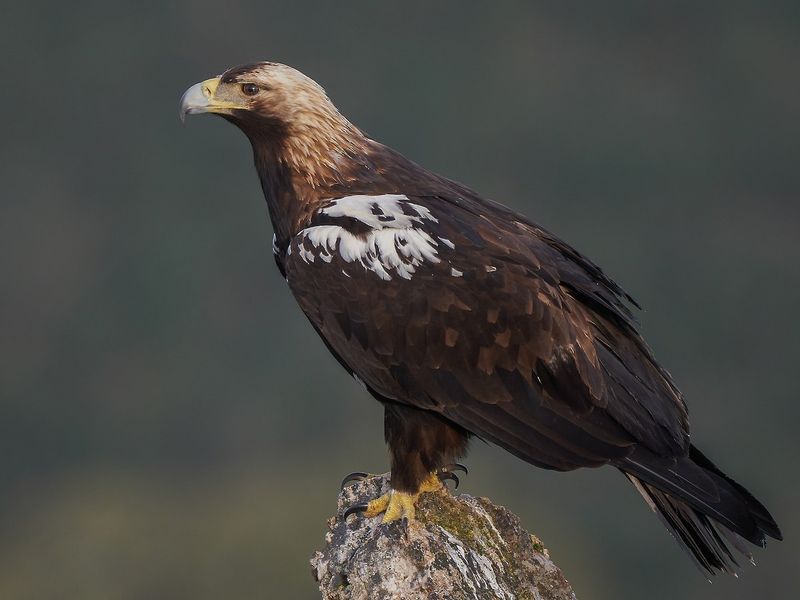
Recently introduced to specialized U.S. breeding programs, the Spanish imperial eagle represents an international conservation success story. Slightly smaller than bald eagles, they still impress with 6-7 foot wingspans and weights reaching 10 pounds.
Their distinctive white shoulder patches stand out against dark brown plumage. Once reduced to just 30 pairs in the 1960s, conservation efforts have helped their population rebound to over 500 pairs today. American facilities participating in breeding programs help maintain genetic diversity while educating visitors about international conservation partnerships and recovery strategies for endangered raptor species.
10. Philippine Eagle
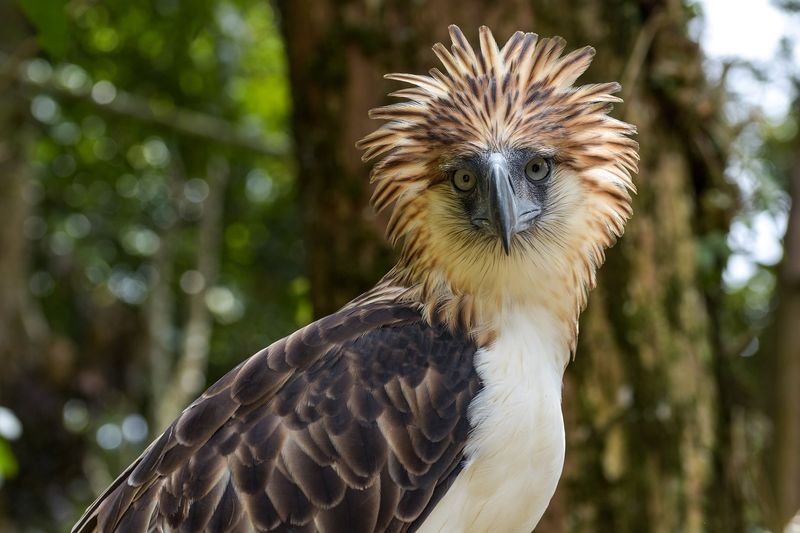
The Philippine Eagle, one of the rarest and largest eagles on the planet, is native to the Philippines and has never been recorded in the wild in the U.S. Still, it often features in global comparisons due to its sheer size and striking appearance.
With a wingspan of up to 7 feet and a shaggy crest that gives it a regal, almost mythical look, this eagle is a national symbol and critically endangered species. It primarily hunts monkeys, flying lemurs, and large birds in dense rainforests.
Though far from American skies, the Philippine Eagle remains a towering figure in any discussion about the world’s most impressive birds of prey.



